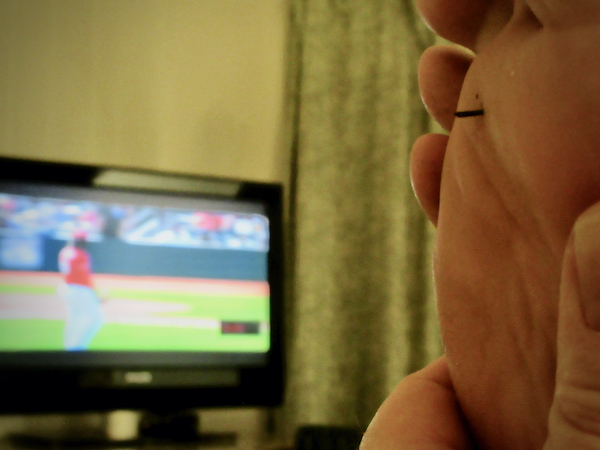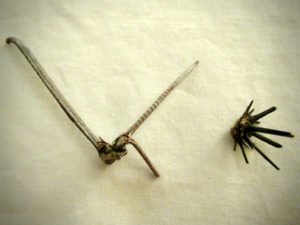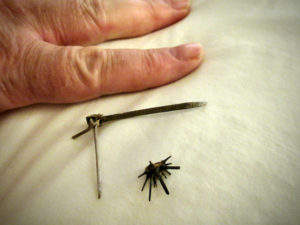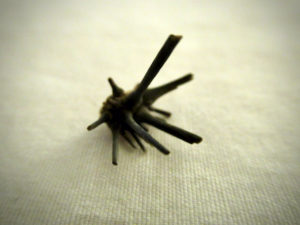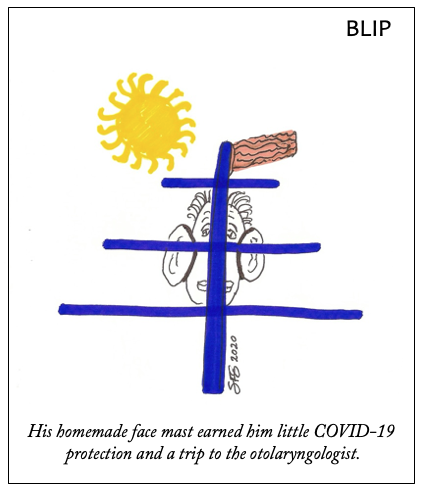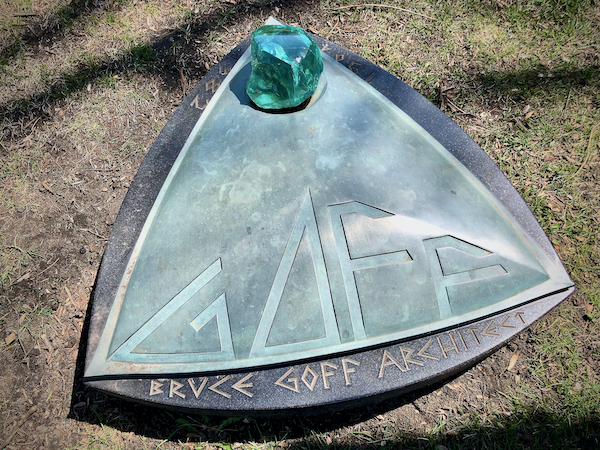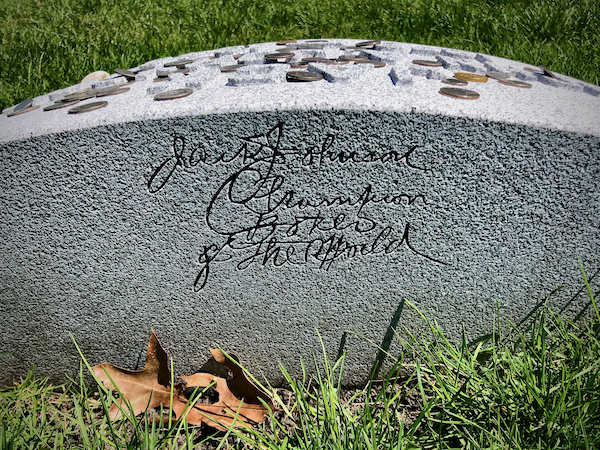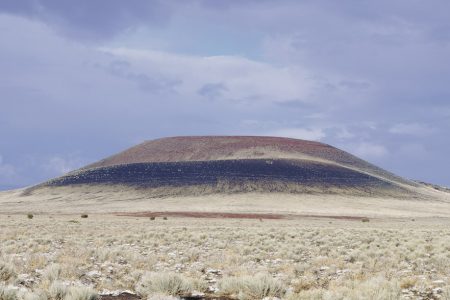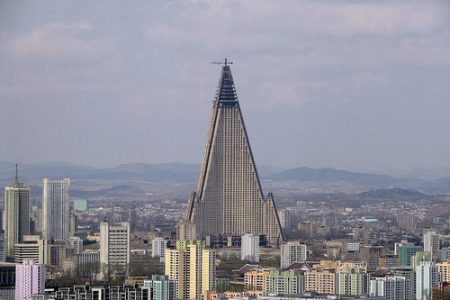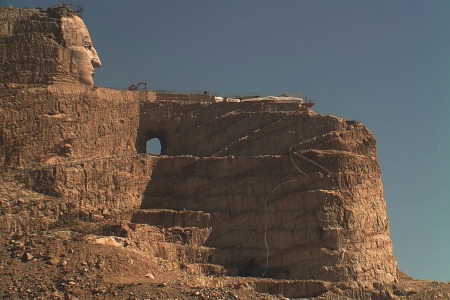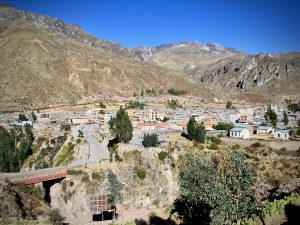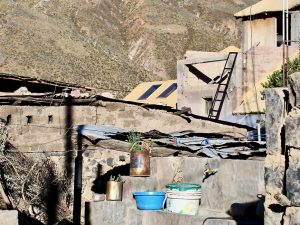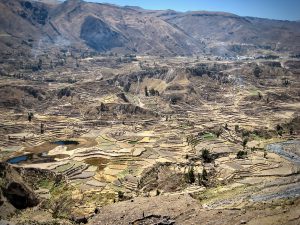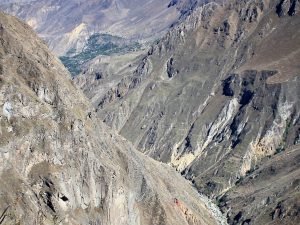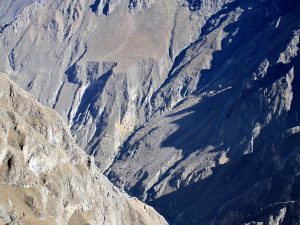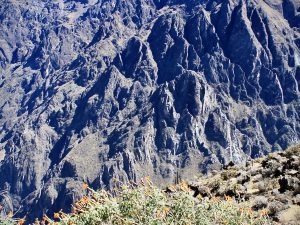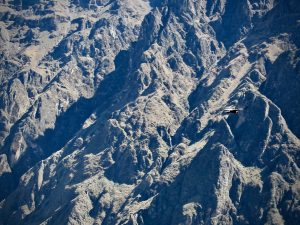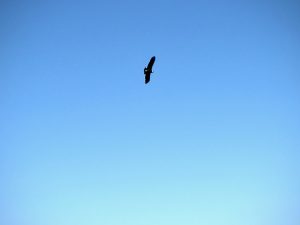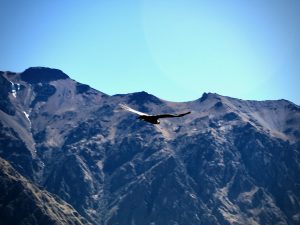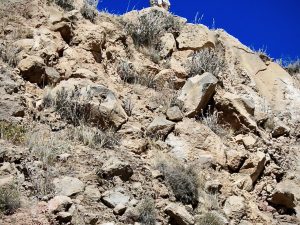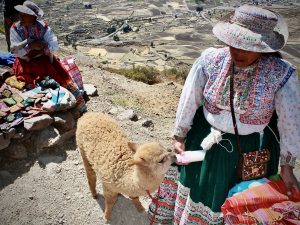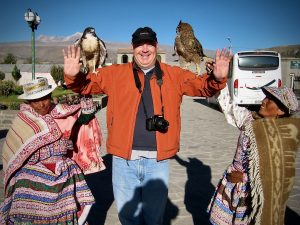Where’s the Funny? Newsletter
Volume 6: 7 April 2020
THE ANXIETY ARC: 30 Steps to Wellness (Right)
“Worry never built a bridge.” That’s what my dad always said. He was a football star in the late ‘40s / early ‘50s – when helmets didn’t have face masks. “You’re not sick” and “If you can’t see the bone, you’re fine” were a couple of his go-to lines whenever I would whine. Once, during my junior year in high school, I had to beg him to take me to the ER after a soccer game. My ankle was the size of a softball and I could barely walk. He finally relented, no doubt because my mom was there, and, yes, X-rays revealed a break. He listened just a tiny bit more after that. But really, most of the time, he was right.
I bring this up because I think of myself as very pain tolerant (and never sick) person – especially during travel. But earlier this year in Arizona, I had what’s typically called “an episode.” And from this experience, I went on to develop my very own self-help program, “The Anxiety Arc: 30 Steps to Wellness.”
The spiritual journey begins mid-afternoon at the centuries-old Mission San Xavier del Bac, just south of Tucson, and ends late-night at the Marine Motel, 128 miles west in Ajo.
- STEP 1: JOY … I’m on top of grotto hill, east of the mission, enjoying a wonderful view of downtown Tucson and the Santa Catalina Mountains
- STEP 2: IGNORANT BLISS … I happily descend from grotto hill down the steep side back to the main path.
- STEP 3: PERPLEXITY … Am I limping? Something’s not right.
- STEP 4: PAIN … Ouch! The ball of my right foot is really sore.
- STEP 5: CURIOSITY, Phase A … I take off my right shoe and look at the bottom of my foot. Hmmm.
- STEP 6: CURIOSITY, Phase B … There’s a quarter-size circle of blood on the sock. I turn my right shoe over and look. Hmmm.
- STEP 7: UNDERSTANDING … There is a black, multi-pronged saguaro cactus spine in the center of my right shoe. I remove the spine from the rubber sole. Upon further inspection, I see a much more ominous 4-inch needle-like spike embedded completely in the heel of my shoe.
- STEP 8: RELIEF … Somehow, the 4-inch spike did not penetrate the interior of the shoe – or my foot. I remove the spike and put the shoe back on. I exhale.
- STEP 9: ENLIGHTENMENT … I come to an understanding that old New Balance running shoes with worn out rubber soles are probably not meant for long hikes in the Arizona desert.
- STEP 10: REFLECTION … The ball of my foot is still sore, but I have removed the two cactus spikes. I climb back into the packed Dodge Caravan and drive the 128-miles west to Ajo. This is a quiet time to ponder what has transpired.
- STEP 11: REJUVENATION … I have a grilled chicken sandwich at the Agave Grille, other than Family Dollar, the only place open in Ajo. I check into the $50-per-night Marine Motel. It’s 9 pm. I hope there is a shower.
- STEP 12: CURIOSITY, Phase C … My foot is still sore. I take off the bloody sock, sit on the bed and look at the bottom of my foot.
- STEP 13: SHOCK … There is a black cactus spine protruding from the ball of my right foot.
- STEP 14: SURPRISE … What? C’mon!
- STEP 15: ANGER … You’ve got to be f****** kidding me.
- STEP 16: CURIOSITY, Phase D … I reach down and give the spine a tug.
- STEP 17: HORROR … Nothing. It won’t come out! I recall being told by one of those know-it-all National Park rangers that there are certain cactus spines that have tiny little hooks on the ends. And if you are unlucky enough to get skewered, you’ll have to cut(!) them out.
- STEP 18: ANXIETY … What do I do? Ajo is a tiny town. Do they even have a doctor here? I saw a fire station – should I go there? Maybe there is a paramedic? What if it’s infected? I think it must be infected! It really hurts now. Am I on a reservation? Isn’t Ajo in the middle of an Indian reservation? Am I on sacred Tohono O’odham land? Do they have doctors here? On TV they never have doctors on the reservation. Or schools. But I know there’s a casino. Should I go there? Will I be able to drive? I still have two weeks left on this trip. Should I cancel the rest of it? I really think it’s infected. It’s turning red. What if it’s poison? What if I stepped on a poison needle? I don’t know anything about desert plants. Should I go to the hospital? Should I call 9-1-1? Or should I just go over to that fire station? What if I need surgery? Can they do it there? I’m all alone. How will they ever get all those little hooks out of my foot? What if it’s already infected! Or poison! What should I do?
- STEP 19: EXHAUSTION … I look away from my foot and move to turn on the TV. Of all the teams, my hometown Cincinnati Reds are playing a spring training game up in Goodyear. Hey, isn’t that Castillo pitching?
- STEP 20: SLOTHFULNESS … I think it’s time for a nap.
- STEP 21: CURIOSITY, Phase E … Should I try to pull it out again? Should I dig it out? Maybe I didn’t get a good enough grip.
- STEP 22: COURAGE … I’m going to pull that m***** f***** outta there. I carefully position the spike between my thumb and index finger.
- STEP 23: STRENGTH … Gently, I squeeze, then pull.
- STEP 24: CONFUSION … What the … ?
- STEP 25: ECTASY … The spike slides right out. It wasn’t even that deep!
- STEP 26: WISDOM … I guess there are not any little hooks on this particular type of cactus.
- STEP 27: JOY … I am alive!
- STEP 28: RAGE … How can I be so dumb! It came right out! Moron!
- STEP 29: INNER PEACE … Breathe. Everything will be all right.
- STEP 30: WELLNESS … I am OK. And 99 times out of a 100, dad was right. I wasn’t sick or injured. Worry never really did build a bridge.
LISTICLE: 5 FREE THINGS ...
... in Chicago
- Chicago Cultural Center, on Michigan Avenue between Washington and Randolph, was built in 1897 as the city’s public library. It has a full schedule of free art, music and other cultural exhibits and is home to the world’s largest Tiffany glass dome. It’s also in a great location, just across the street from Millennium Park.
- Signature Lounge at the 96th: At the top of what locals call the “Hancock Building” (actually, the John Hancock Center but now unnamed and going by 875 North Michigan) is a bar. Not the overpriced white tablecloth restaurant on the 95th floor. And not the 360 Chicago Observation Deck, which features the heart-stopping Tilt. It’s just a bar / lounge, with $10.50 beer and $17 glasses of wine. Technically, you are supposed to wait in line to be seated, but the place is usually so overwhelmed and the staff so limited that any time I have been there I just walk straight in. Act like you own the place. Take a look at the spectacular views. Sit at an open table – even one that has not been bussed – or a chair around the three-sided, all-glass perimeter. Take photos. And then after 15-20 minutes, just leave. The worst case scenario? The wait staff spots you and asks for your order. Buy a ridiculously priced soda. You’ll still come out way ahead. And these views are way better IMO – and very different – than those from the Sears Tower / Willis Tower, where it feels more like you’re in an airplane than in a downtown.
- Trails: Chicago is a city of parks, and there are miles upon miles of interconnected trails to explore on foot or by bike. My go-to is the Chicago Lakefront Trail, which runs for 18.5 miles along Lake Michigan. I can walk my 5+ mile route from Wrigleyville to downtown in about an hour. If you want to get off the lake, try the 2.7-mile Bloomingdale Trail (aka The 606). Another beautiful segment is the 1.25 mile Chicago Riverwalk, which traces the Chicago River from Lake Michigan west and is an easy jump over to the newly renovated Navy Pier. In wet or frigid weather, try the Chicago Pedway, which snakes around the central business district for 40 blocks of interconnected tunnels, bridges and concourses.
- Public art: I could wrap this into the trail section above, but the vast amount glorious Chicago public art installations deserve to stand alone. In the center of town, you’ll find a mosaic by Marc Chagall (The Four Seasons) and monumental sculptures by Pablo Picasso (Untitled), Alexander Calder (Flamingo) and Joan Miró (Chicago, originally The Sun, The Moon and One Star). Millennium Park features the most popular attraction, Anish Kapoor’s Cloud Gate (he hates that everyone calls it The Bean). But at the south end of the park is something even more interesting, the aimlessly wandering cluster of 106 9-foot-tall headless torsos from Magdalena Abakanowicz (Agora). And that’s just a few of them.
- Graceland Cemetery: It took 22 years and a global pandemic, but I finally made it the seven blocks to Graceland Cemetery in Lakeview, at the intersection of Irving Park Road and North Clark Street just north of Wrigley Field. Established in 1860, it’s not only a cemetery but also a beautiful 119-acre park. The monuments are fascinating, from tree-stump tombstones to the obscenely-tall obelisks. There are mausoleums with famed architect Louis Sullivan doors and Tiffany glass. Without hardly trying, I saw grave sites for world champion boxer Jack Johnson, business magnate Potter Palmer (who built downtown’s grand Palmer House Hotel) and architects from Mies van der Rohe to Bruce Goff. A self-guided audio tour will help you discover even more treasure.
IN PRACTICUM
AIRLINES 2.0: Carriers do what they do best – make air travelers miserable
In one of the most draconian responses to the COVID-19 pandemic so far, officials in Argentina say they will forbid ALL air travel to and from the country until September 1. You heard it right. Not June 1. Not July 1 or August 1. But September 1.
Meanwhile, in the United States, major airline executives are in full crisis containment mode, issuing statements (American Airlines) and setting new policies (United Airlines) meant to show the general public that it will soon be safe to travel by air again – and this time, they really mean it. And with ticket demand down a whopping 95 percent, they better mean it.
Starting in May, all passengers on American Airlines, United Airlines and most others will be required to wear a face covering (e.g. mask, paper bag etc.). In a sign of solidarity (and fair play), flight attendants will be required to do the same. Some other moves:
- Some terminal kiosks will be turned off to maintain social distancing. Two out of three were out of service anyway, so I guess it’s only logical to use them as spacers.
- Cleaning procedures will be more comprehensive, using EPA-registered hospital-grade disinfectant. Airlines say they are now going to do what they used to do only on longer stops. So, what were they doing before? Spit and polish? Kinda gross.
- Most aircraft already are equipped with high-efficiency particulate air (HEPA) filters, and cabin air is changed 15 to 30 times per hour (every two to four minutes) – the same standard as hospitals. Right. That’s why I get a sinus infection after every flight.
Seriously, though, there is some good news. In an effort to maintain social distancing, middle seats will not be sold. I repeat, no one will have to sit in (or next to someone in) a middle seat. This is huge! And for me, it’s an incentive to fly right now, because you know this one will never last.
Also, finally, airlines now are allowed to impose a total ban on emotional support animals. Not the properly-trained, certificate-holding service animals that actually perform specific tasks for people with disabilities, but everything else being brought on board. A squirrel, peacock, duck, turkey, pig, marmoset (that’s a tiny monkey) – even a miniature Appaloosa horse – these are real examples. If this thins the (flying) herd, then so be it.
QUICK SPINS: Unfinished business ...
(OUT)LAND(ISH) ART: Kanye drops $10M dime into the Roden Crater project
American light and space artist James Turrell has been digging tunnels in the Painted Desert area of Arizona since 1977. That’s when the artist, who turns 77 on May 6, bought the Roden Crater, a long dormant (he hopes) volcano near Flagstaff.
Turrell’s vision is to create a celestial observatory. Inside the 1.5-mile wide crater, a series of tunnels and openings will allow visitors to interact with time, sun and space during the day and planets and stars at night.
The magnitude of the project was enough to attract the attention of Kanye, who used the location in his IMAX film, “Jesus is King.” More importantly – to Turrell, at least – is the hip-hopper’s $10 million contribution to the project.
These additional funds, plus partnerships with Arizona State University and the Los Angeles County Museum of Art, will allow Turrell to finish the massive project in the next five years. Upon completion, there will be six tunnels and 21 spaces for other-worldly observation. And who doesn’t want to bask in glow of Jupiter?
But don’t go there now. It’s still private property and not open to the public. Unless you’ve got $10 million to spare. Then, by all means – please come on out!
EPIC FAIL: Pyongyang's "Hotel of Doom" tallest unoccupied building on planet
One place you won’t find North Korean despot Kim Jong Un is the Ryugyong Hotel in Pyongyang. That’s because the 105-story hotel is not open – and maybe never will be.
Construction began in 1987, as part of the North Korean propaganda machine’s response to the 1988 Summer Olympics in Seoul. But builders ran in to engineering problems (and out of money), so all work stopped in 1992 – with a crane still attached at the very top.
The 1,083-foot structure was supposed to have 3,000 hotel rooms and five rotating restaurants. It’s constructed almost entirely of concrete, which explains the massive base. It’s the only shape that will support the weight of that building material.
After 16 years of nothing (when it earned the moniker, “Hotel of Doom“), an effort to clad the exterior in glass began in 2008. By 2012, the building – now with a glitzy veneer (but still empty inside) – appeared to have some life. But, alas, the problems inside would persist.
Today, it’s used primarily as a futuristic backdrop for military parades and laser light shows – the perfect setting for the Young Master / Brilliant Comrade / Great Successor to share his stories of achievement with the masses.
Alas, the North is going to have to learn to build with something other than concrete if they hope to retake the title of tallest building on the Korean peninsula, as the 1,823-foot Lotte World Tower (the fifth tallest in the world) opened its doors in 2017 in Seoul.
PROGRESS: South Dakota's Crazy Horse Memorial to open by Year 10,000 AD
On June 3, 1948, Boston-born sculptor Korczak Ziolkowski sets off the first stick of dynamite in his lifelong quest to transform Thunderhead Mountain in into the Crazy Horse Memorial in the Black Hills of South Dakota.
The controversial monument, commissioned by Lakota Chief Henry Standing Bear, is a tribute to the great Oglala Lakota warrior, Tasunke Witko (aka Crazy Horse), who helped annihilate Lt. Col. George Custer and most of the U.S. Army’s 7th Cavalry at the Battle of Little Bighorn (aka Custer’s Last Stand, Battle of the Greasy Grass) June 25-26, 1876. If and when it’s ever completed, the granite sculpture will be the largest in the world – more than four times the size of the Statue of Liberty.
Ziolkowski died in 1982, leaving the project’s completion to his wife Ruth (1926-2014), their 10 children and the non-profit Crazy Horse Memorial Foundation.
On my visit to the site in the late 1970s, if I really, really squinted and used my imagination, I could make out the line of a pointing arm. It took 50 years to complete Crazy Horse’s face (1998). And, at present, they are working on his hand, outstretched arm and horse’s mane – which, according to my calculations, is basically everything else.
PHOTO FAVORITES: Colca Canyon, Peru
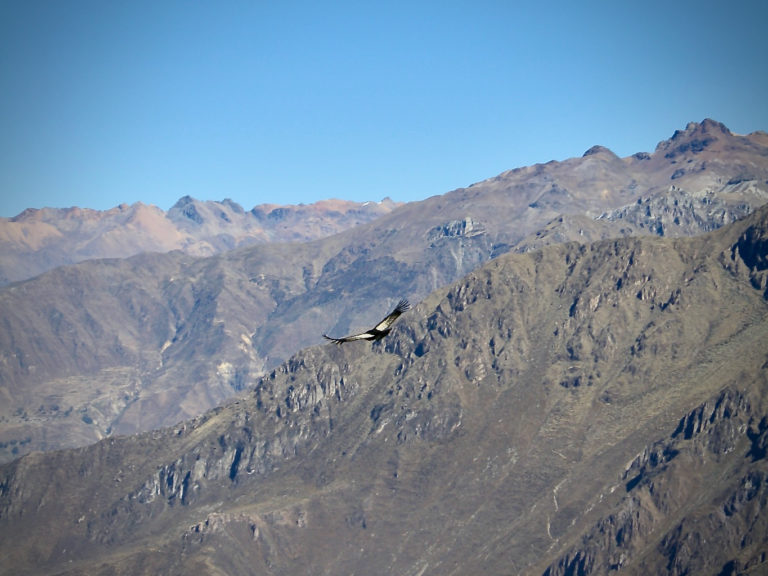
About 99 miles northwest from Peru’s second city, Arequipa (the “White City“), is Colca Canyon (Cañón del Colca). With depths of nearly 11,000 feet, this canyon is arguably the deepest in the Americas (e.g. Arizona’s Grand Canyon is about half as deep). This side trip is part of an overnight bus tour from Arequipa that goes to Yanque, where you can see the ornate entry to the Iglesia de la Inmaculada Concepción, and the town of Chivay. But I’m here to see the great Andean condor, which fly right by as they cruise the canyon rim at Cruz del Condór.
QUESTIONS OR COMMENTS?
First, thank you for reading this newsletter. If you have any questions about anything that appears here, please do not hesitate to contact me directly via email at: hello@wheresthefunny.blog.
PREVIOUS NEWSLETTERS
- Where’s the Funny? Volume 1 (November 2019)
- Where’s the Funny? Volume 2 (December 2019)
- Where’s the Funny? Volume 3 (January 2020)
- Where’s the Funny? Volume 4 (February 2020)
- Where’s the Funny? Volume 5 (March 2020)

